Submitted by chandra on Thu, 2016-04-28 00:01
We are happy to welcome Dr. Andrea Morandi as our guest blogger, who is giving us insight into his recent work on using galaxy clusters to investigate the nature of dark energy. Originally from Italy, Dr. Morandi received his Ph.D. in astronomy from the University of Bologna. Prior to his current position as a research assistant at the University of Alabama in Huntsville, Dr. Morandi was a post-doctoral fellow at the DARK Cosmology Center in Copenhagen and Tel Aviv University, followed by time as a research associate at Purdue University.

In 1998 and 1999 astronomers discovered the accelerating expansion of the Universe, providing evidence for the existence of the mysterious dark energy driving this acceleration. The same year I started to study astronomy at the Bologna University, fascinated by this major breakthrough in cosmology. I guess my interest for cosmology started from here.
Submitted by chandra on Mon, 2016-04-18 10:28
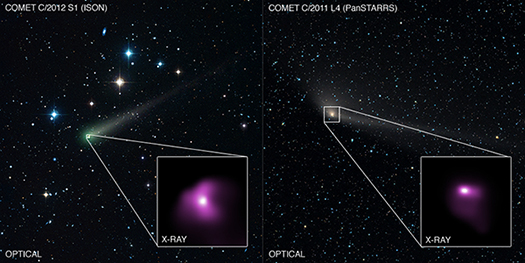
For millennia, people on Earth have watched comets in the sky. Many ancient cultures saw comets as the harbingers of doom, but today scientists know that comets are really frozen balls of dust, gas, and rock and may have been responsible for delivering water to planets like Earth billions of years ago.
Submitted by chandra on Wed, 2016-03-30 08:50
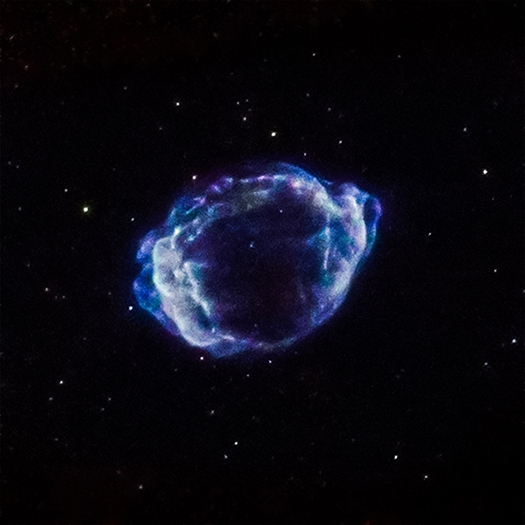
Scientists have used data from NASA's Chandra X-ray Observatory and the NSF's Jansky Very Large Array to determine the likely trigger for the most recent supernova in the Milky Way, as described in our latest press release.
Submitted by chandra on Tue, 2016-03-22 13:37
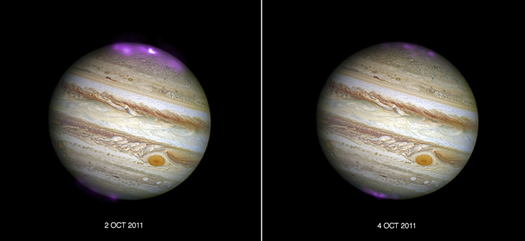
Solar storms are triggering X-ray auroras on Jupiter that are about eight times brighter than normal over a large area of the planet and hundreds of times more energetic than Earth's 'northern lights,' according to a new study using data from NASA's Chandra X-ray Observatory. This result is the first time that Jupiter's auroras have been studied in X-ray light when a giant solar storm arrived at the planet.
Submitted by chandra on Thu, 2016-03-10 09:58
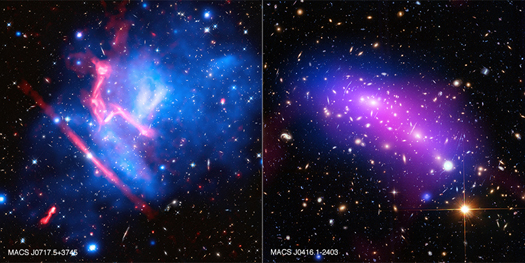
Galaxy clusters are enormous collections of hundreds or even thousands of galaxies and vast reservoirs of hot gas embedded in massive clouds of dark matter, invisible material that does not emit or absorb light but can be detected through its gravitational effects. These cosmic giants are not merely novelties of size or girth - rather they represent pathways to understanding how our entire universe evolved in the past and where it may be heading in the future.
Submitted by chandra on Thu, 2016-02-18 22:27
On February 17th, the Japanese Aerospace Exploration Agency (JAXA) launched a rocket into space with the X-ray Astronomy Satellite, also known as ASTRO-H, onboard.
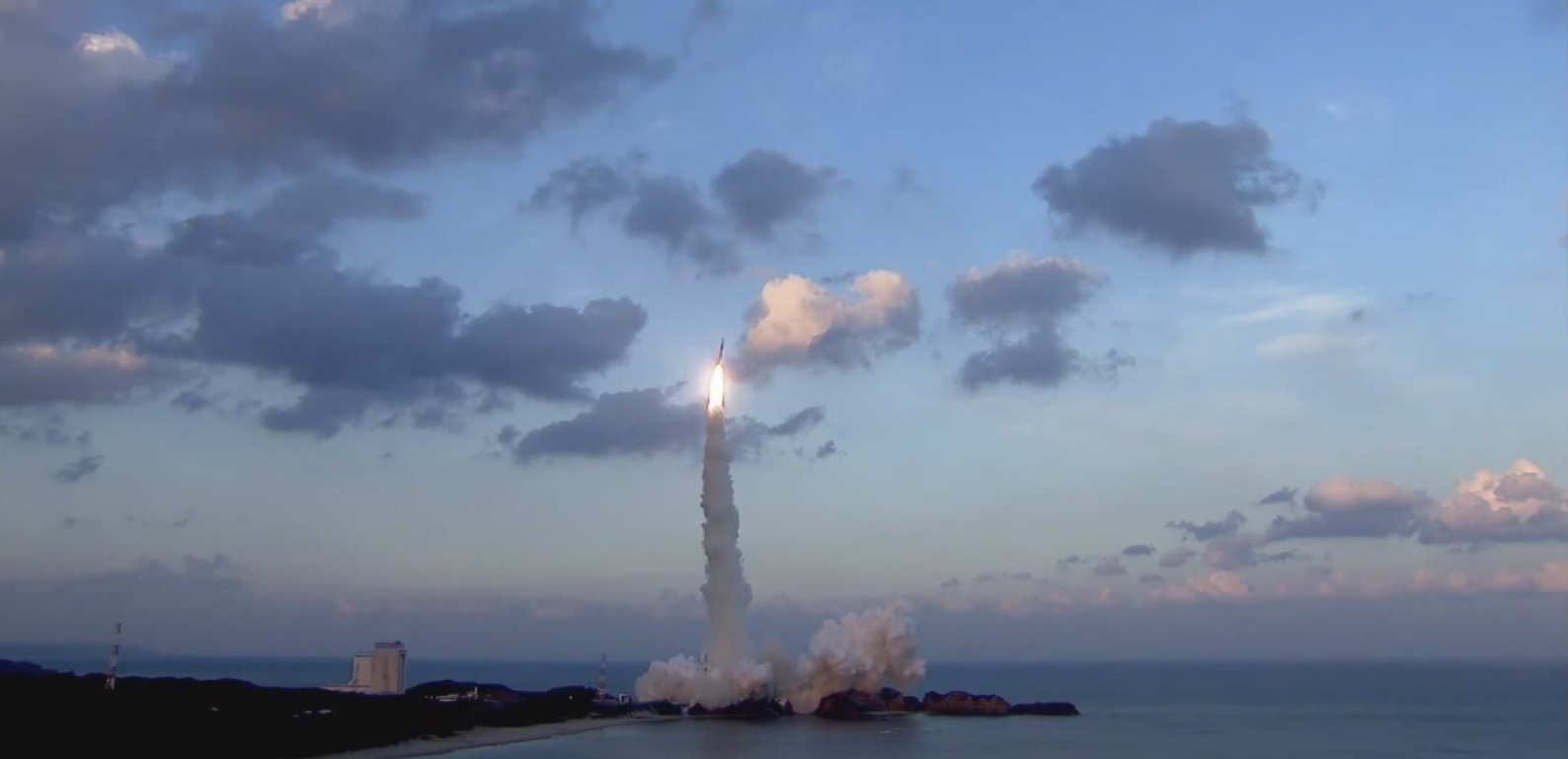
Credit: NASA
Shortly thereafter, ASTRO-H separated from the spacecraft and deployed its solar panels. Operators then received data transmitted from the satellite and received at the Uchinoura ground station in Japan. All reports are that the satellite is currently in good health.
Submitted by chandra on Tue, 2016-02-16 13:08
 Aurora Simionescu
Aurora SimionescuWe are pleased to welcome a guest blogger, Aurora Simionescu, who led the study that is the subject of our latest press release, about a distant X-ray jet. Originally from Romania, Aurora completed her PhD at the Max Planck Institute for Extraterrestrial Physics in Garching, Germany, before moving to Stanford University as an Einstein Postdoctoral Research Fellow. She is currently working as an International Top Young Fellow at the Institute of Space and Astronautical Sciences of the Japan Aerospace Exploration Agency. Besides being a high-energy astrophysicist, she is also a part-time travel and nature photographer with a skiing addiction who loves ballroom dancing and the color pink.
Around March 2014, my colleague, Lukasz Stawarz, who was then sharing an office with me at the Japan Aerospace Exploration Agency, showed me a very odd astronomical object he and his collaborators had found by searching though archived radio observations from the Very Large Array (VLA).
Submitted by chandra on Tue, 2016-02-16 10:00
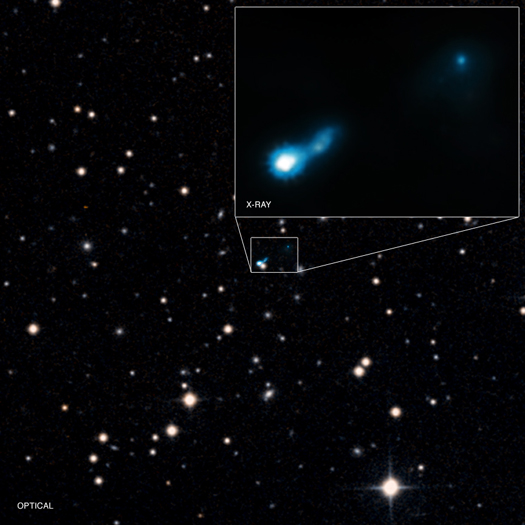
A jet from a very distant black hole being illuminated by the leftover glow from the Big Bang, known as the cosmic microwave background (CMB), has been found as described in our latest press release. Astronomers using NASA's Chandra X-ray Observatory discovered this faraway jet serendipitously when looking at another source in Chandra's field of view.
Submitted by chandra on Thu, 2016-02-11 11:41
It's a fitting coincidence. Just a few months after celebrating the 100th anniversary of Einstein's theory of General Relativity (GR), we have just heard that gravitational waves, a key prediction of GR, have been directly detected for the first time. The February 11th, 2016 announcement by the Laser Interferometry Gravitational-Wave Observatory (LIGO) team is one of the most important moments in the history of astrophysics. Here, I discuss how observations with NASA’s Chandra X-ray Observatory and other traditional observatories help complement the detection and study of gravitational waves.
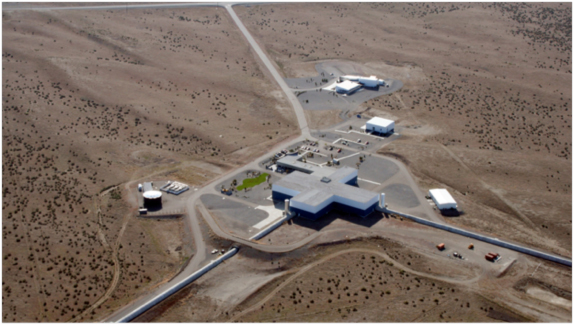
Figure 1: The LIGO Hanford Observatory. Credit: Caltech/MIT/LIGO Observatory
Gravitational waves are produced by violent events, such as the collisions and mergers of neutron star or black hole pairs, or the collapse and explosion of massive stars in supernovas. As a September 2015 news release by LIGO eloquently explains,
Submitted by chandra on Wed, 2016-02-03 10:29
Science is a distinctly human endeavour that overlaps with many other fields.
Scientific discoveries can provide inspiration for music, art, literature and poetry. As an example of the latter, over several years we have hosted the results of poetry competitions run by Jonathan Taylor, a lecturer in Creative Writing at The University of Leicester in the UK. Jonathan asks students to write a poem based on one of the results in our press or image releases.
Pages